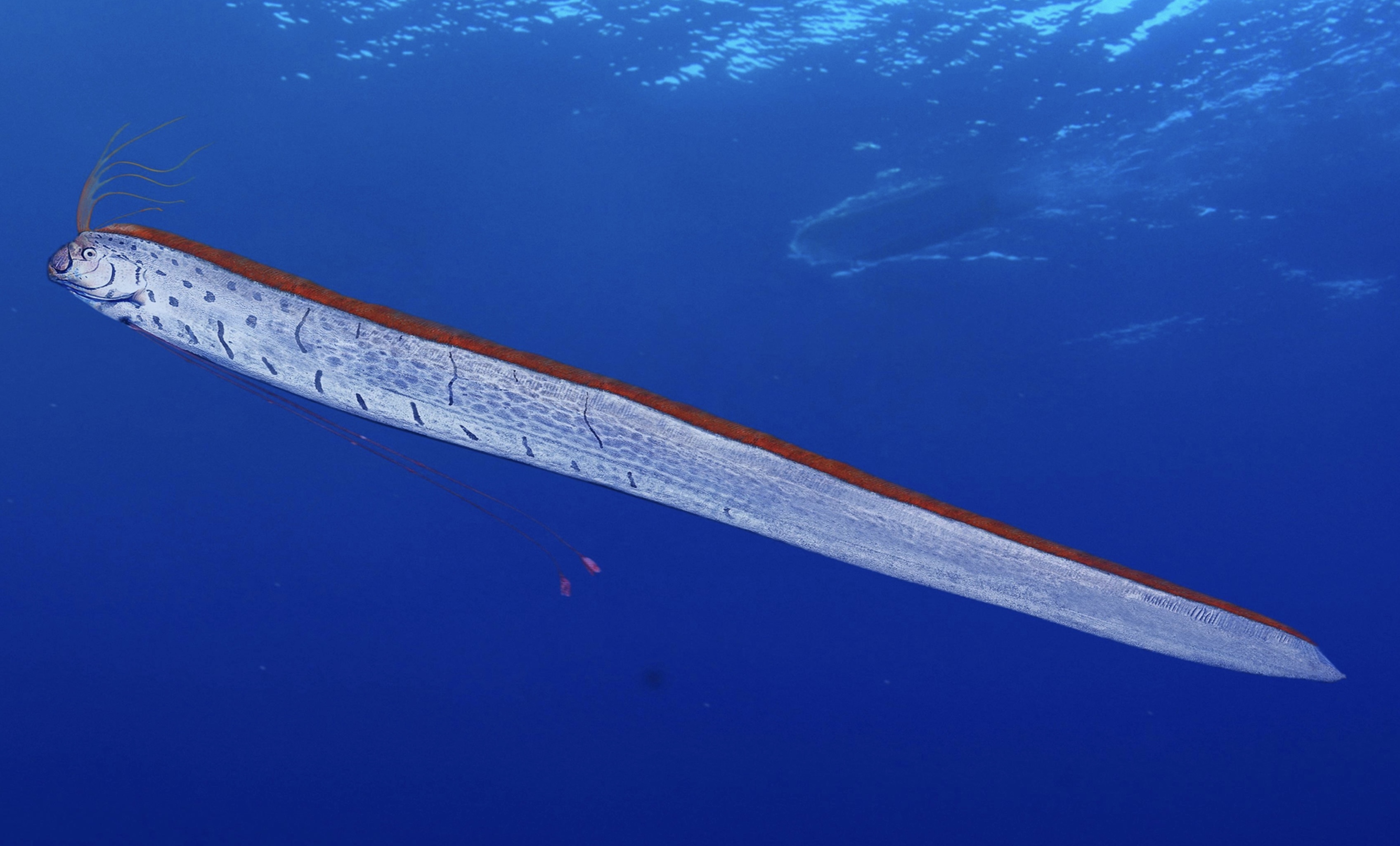cross-posted from: https://lemmygrad.ml/post/4518571
The giant oarfish (Regalecus glesne) is a species of oarfish of the family Regalecidae. It is an oceanodromous species with a worldwide distribution, excluding polar regions. Other common names include Pacific oarfish, king of herrings, ribbonfish, and streamer fish. R. glesne is the world's longest ray-finned fish. The long, flat, tapering body is reflective silver with a dorsal fin running the length of it that it uses to swim and turn with. Its abrupt, slightly concave profile is set with a toothless mouth ideal for filtering krill and crustaceans out of the water. This species is the world's longest bony fish, reaching a record length of 17 m (56 ft). It is commonly measured to 3 m (9.8 ft) in total length. An oceanic species, the oarfish is found living at great depths to 3,280 feet (1,000 m) but more typically to depths of 656 feet (200 m). It is occasionally found cast upon beaches after storms or near the surface when injured or dying. Oarfish feed on plankton, crustaceans, and squid by straining them from the water column using specially evolved gill rakes located in the mouth. They orient themselves vertically within the water column which is theorized to allow them to spot the silhouettes of prey items. Then they use their protrusible mouths to suck in prey items including plankton, squid, fish and euphausiid crustaceans which are then strained out of the water by the gill rakers. There is some speculation that they may also steal food items from siphonophores. Due to its significant size, larger fish including sharks are the primary potential predators of the oarfish. Oarfishes, are oviparous broadcast spawners and spawn in warm waters between July and December. After fertilization its large eggs pelagic eggs (2-4 mm) remain near the ocean’s surface until hatching after about three weeks. The resulting larvae have the appearance of miniature adults and feed on plankton until they mature.

The fish is probably as long as at least two people